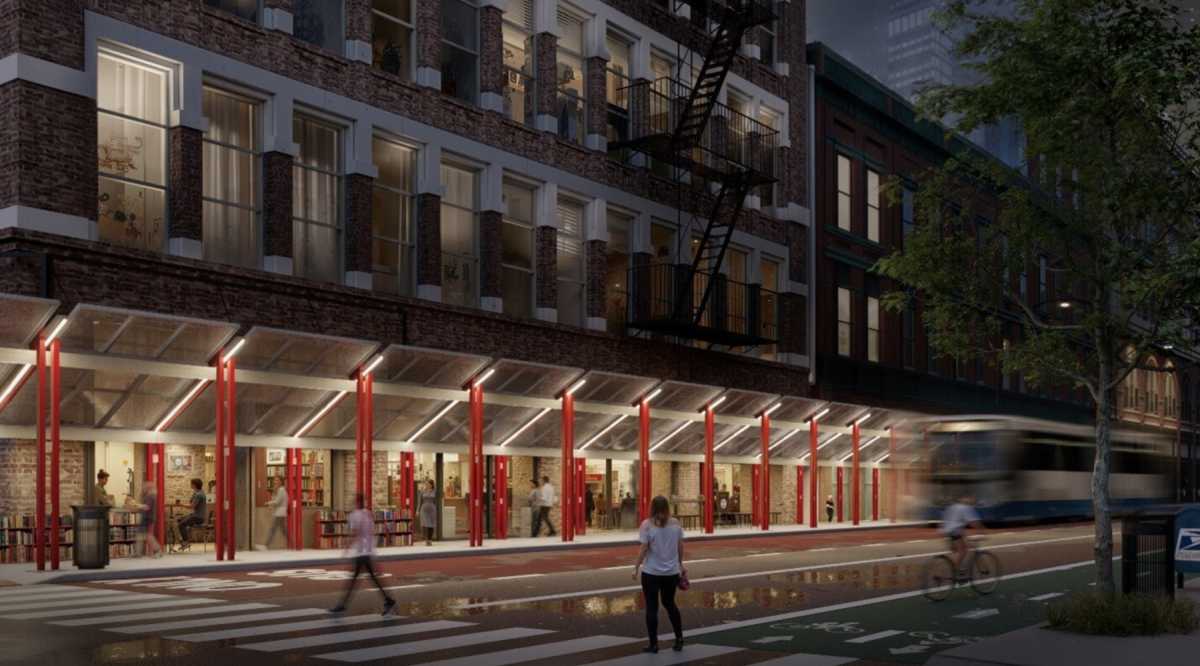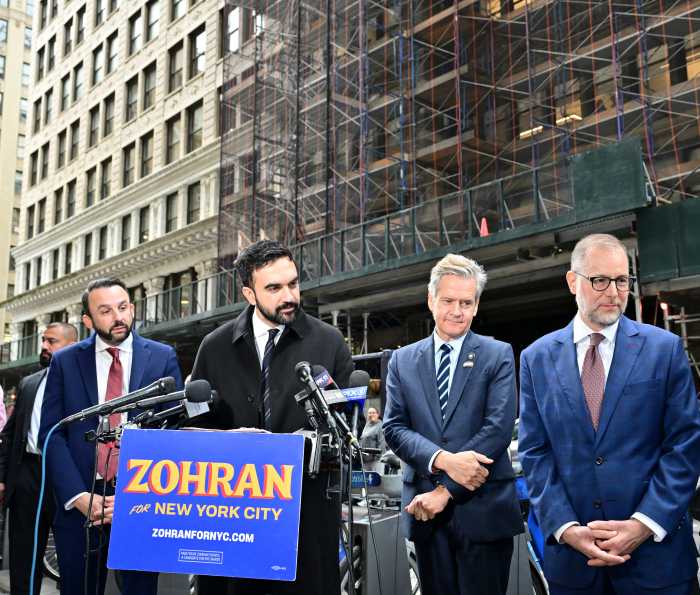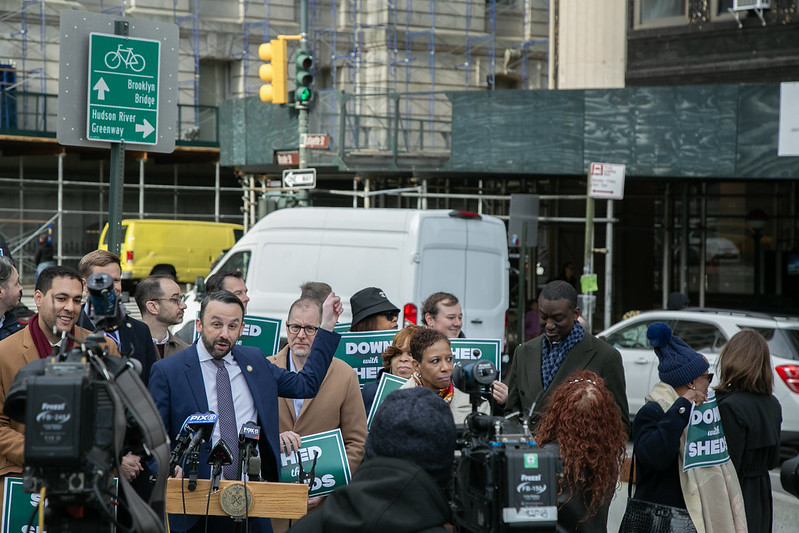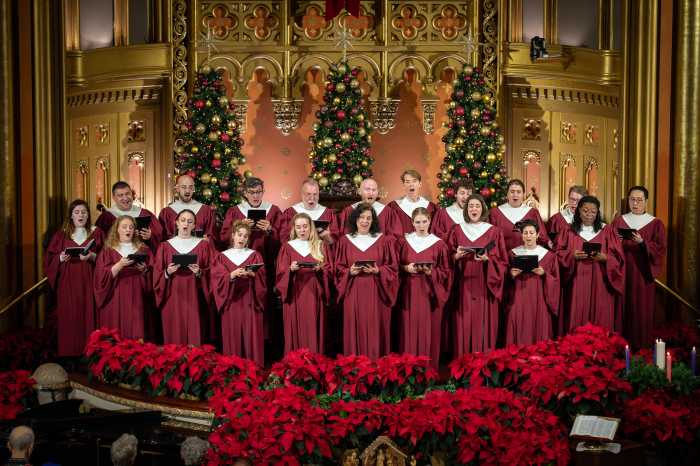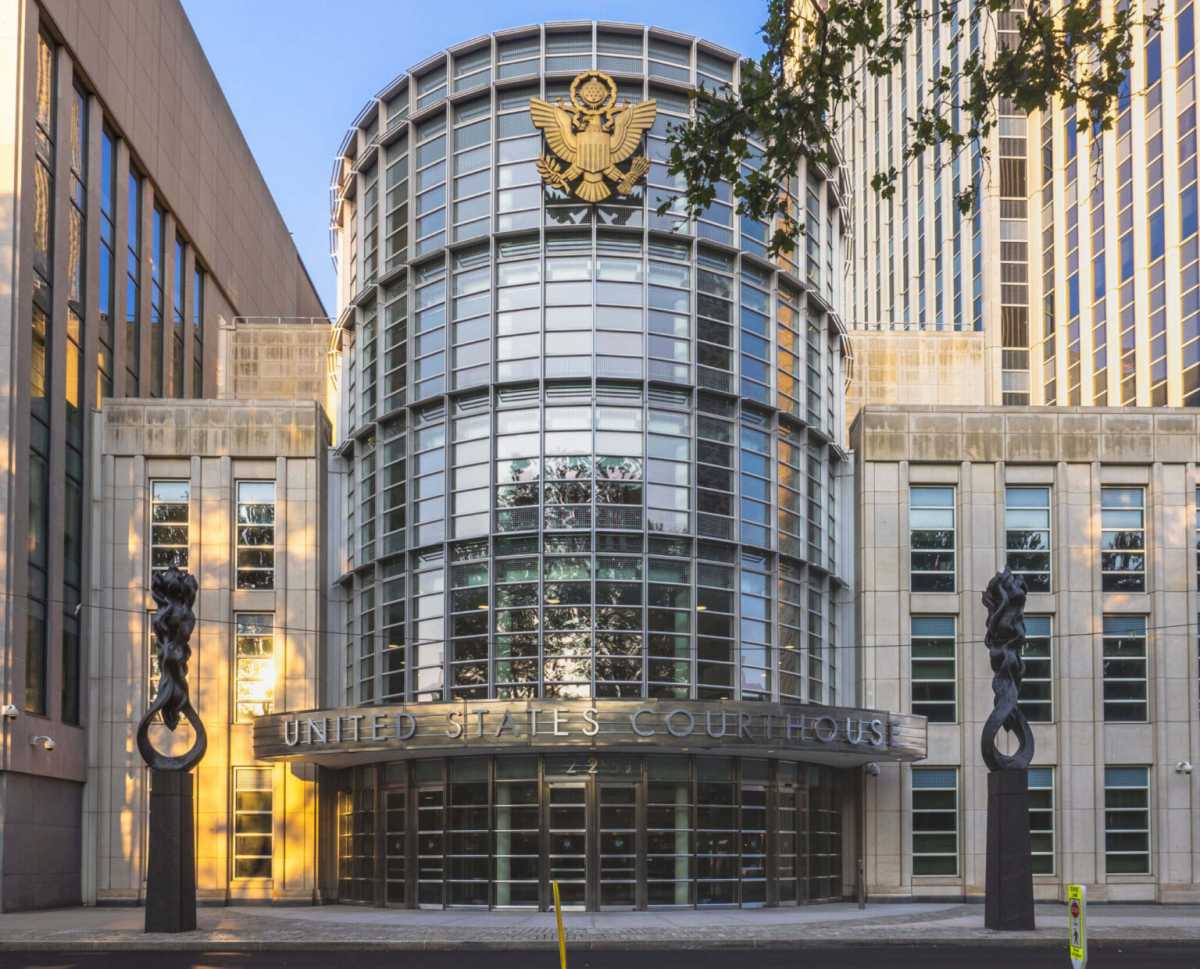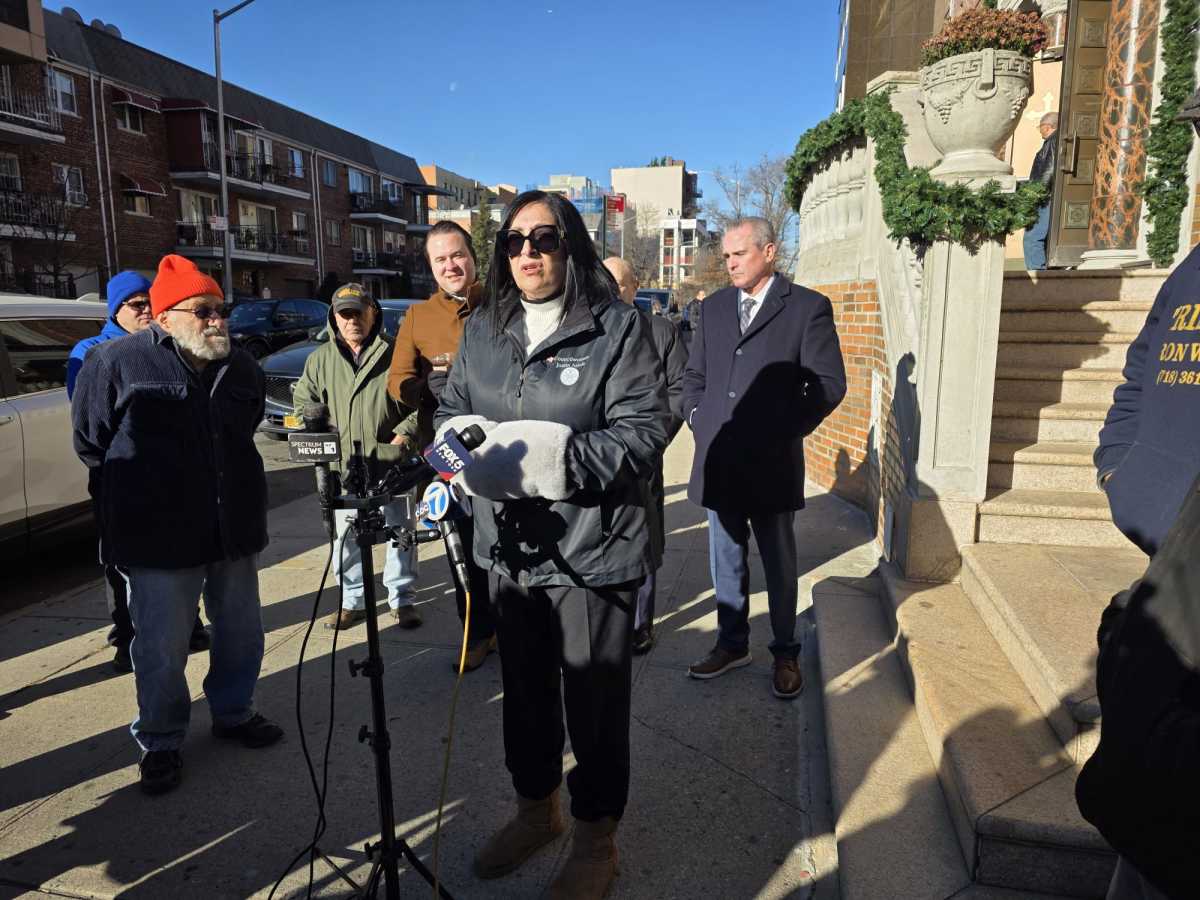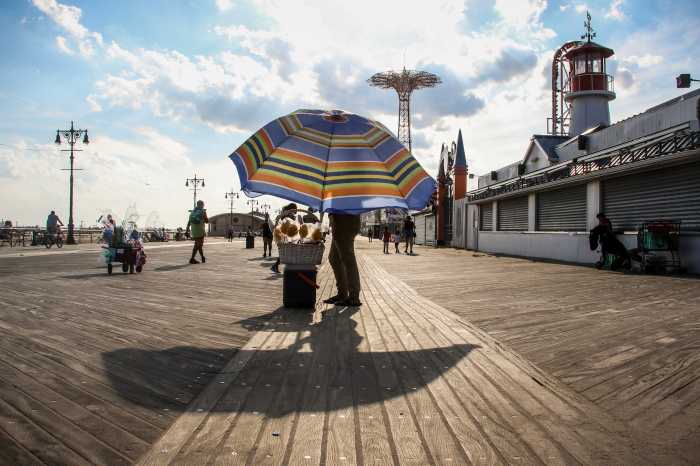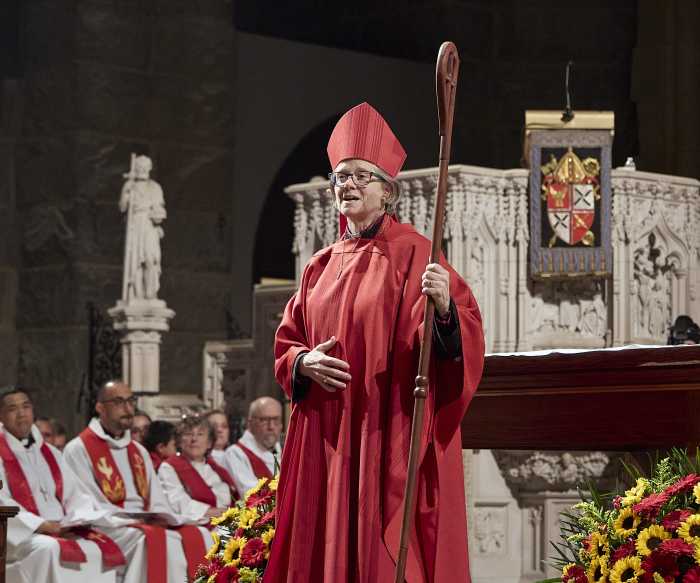City Hall unveiled six new sidewalk shed designs on Tuesday, aiming to replace the long-standing green plywood construction sheds and scaffolding structures that populate the five boroughs.
The designs, developed by the architecture firms Practice for Architecture and Urbanism (PAU) and Arup, are intended to enhance the pedestrian experience while maintaining the required safety standards at construction sites and buildings undergoing façade work, Mayor Adams announced on Nov. 18, noting that the new models could begin appearing on sidewalks as early as next year.
The designs include both light-duty and heavy-duty options that aim to increase natural light, reduce sidewalk obstruction, and better integrate into the surrounding streetscape.
The Speed Shed, designed by PAU, is a light-duty structure built for rapid installation and short-term use. It features an angled roof with netting designed to allow more sunlight onto the sidewalk.
The Rigid Shed, by Arup, is a heavy-duty model suited for major construction operations, including high-rise projects. Its design reduces the amount of sidewalk space occupied by columns and support structures. PAU’s Baseline Shed is a versatile option available in light- and heavy-duty versions. It features an angled, transparent roof designed to brighten pedestrian areas.


Arup’s Air Shed departs from traditional shed design by eliminating ground-level supports. It is anchored directly into building façades and cantilevers above the sidewalk, minimizing impact on pedestrian circulation.
The Wide Baseline Shed, another PAU design, is scaled for broad sidewalks and major corridors. Heavy-duty columns are spaced farther apart to open additional space for foot traffic.
Arup’s Flex Shed offers adjustable roof heights and adaptable column placement to navigate irregular building profiles and sidewalk obstacles such as bus shelters and street signs.

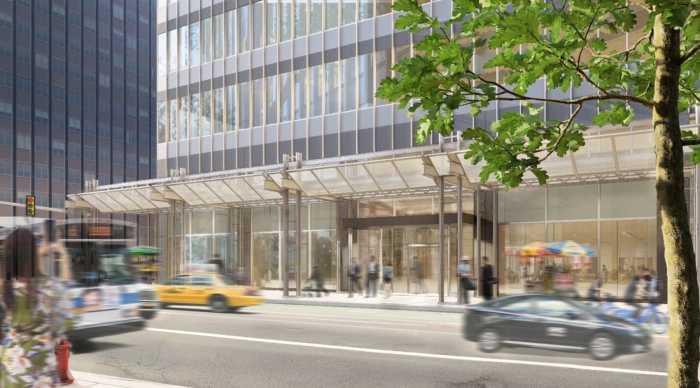
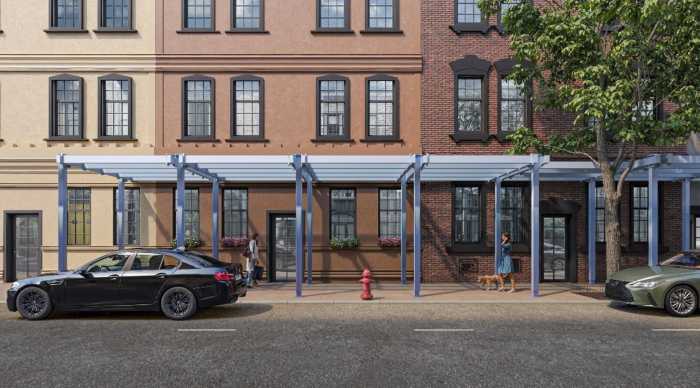
City officials said the designs were created using readily available, cost-effective materials in an effort to encourage widespread adoption by contractors and building owners.
The Department of Buildings plans to make all six models available through forthcoming rulemaking, allowing registered design professionals to obtain permits through the city’s existing certification process, according to officials.
Adams described the new models as significant improvements over the aging green sheds that have become fixtures throughout the city’s neighborhoods.
“For too long, scaffolding and outdated and cumbersome sidewalk sheds have blocked sunlight, hurt small businesses, and cluttered our neighborhoods, but today marks a major step forward in our mission to reimagine New York City’s streetscape,” said Adams.
Earlier this year, Hizzoner signed a five-bill legislative package that has given the DOB expanded authority to push property owners to complete building repairs more quickly and remove sidewalk sheds once the work is done.
Under the legislation, approved by the City Council the previous month, sidewalk shed permits will be reduced from one year to three months, and the DOB can deny renewals unless property owners provide proof of progress on required repairs. The city also plans to increase enforcement against building owners who delay repairs for extended periods.
The laws also introduced changes, such as shorter shed permit durations, stricter penalties for delays, and increased design flexibility, including expanded color options and enhanced lighting requirements.
Tuesday’s unveiling comes as Adams prepares to hand power to Mayor-elect Zohran Mamdani, who has sharply criticized the current administration for not doing enough on scaffold removal.
Mamdani has proposed removing all city-owned scaffolding that has been in place for more than three years, calling the network of structures a “concrete jungle gym.” Prior to the election, he stated that his administration would aggressively fund repairs to city properties, allowing sheds to be dismantled more quickly.
During that October 20 announcement, Mamdani also committed to implementing new “safer, brighter, and airier” scaffolding designs based on an ongoing DOB study and to reorient the Office of Management and Budget to prioritize preventive maintenance funding for city buildings, thereby reducing the need for scaffolding in the long run.
His transition team did not respond to requests for comment on the designs unveiled Tuesday and whether the Mamdani administration will move forward with them.



